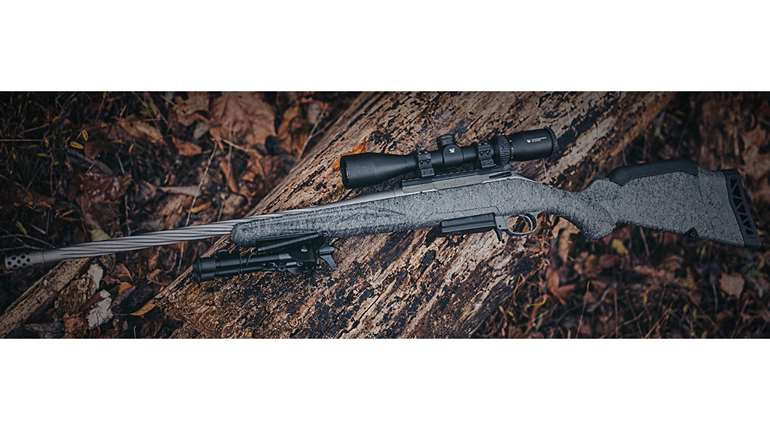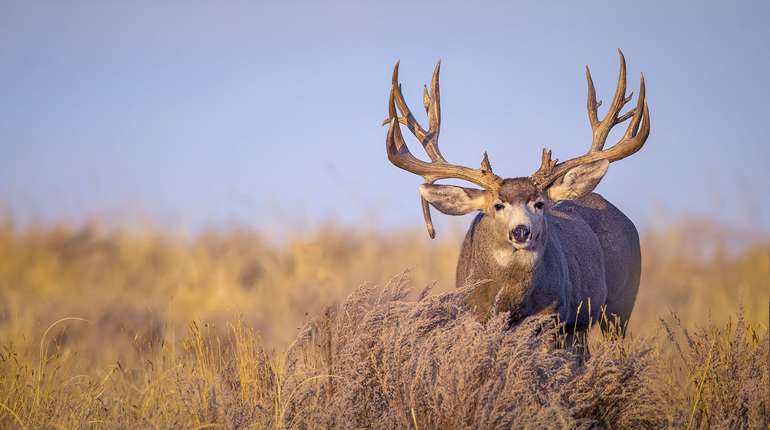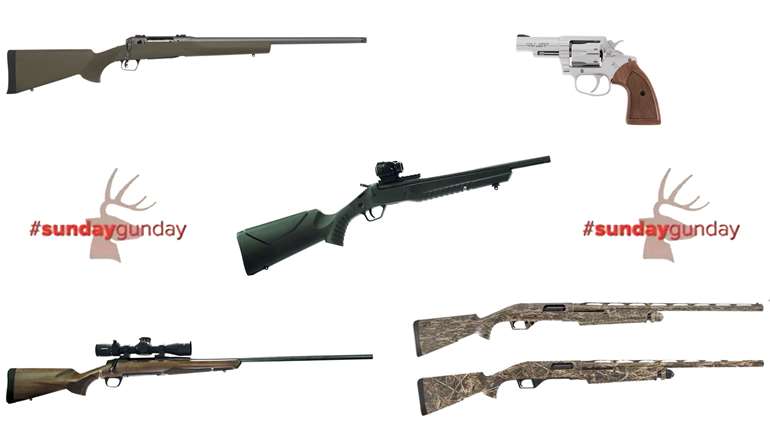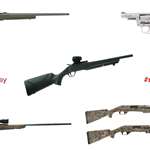
A hunt in the Great Smoky Mountains, on the plains of Kansas or the Cascade Range in California all require unique considerations for your hunting camp. Skip this process and the discomforts of a bad camp could make for a miserable week, and possibly even abbreviate your hunt. Summer is the ideal proving ground to test the limits of your camp before fall, especially if you can journey to your hunt location.
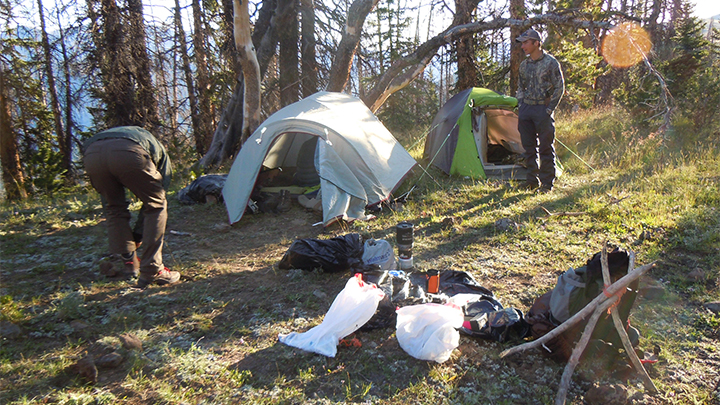
Base-Camp Basics
Like the location of your house, the base camp provides a sanctuary for rest, a reprieve from weather and a place to celebrate when success finds you. Choose your location wisely. As you begin ranking campsite locations, keep in mind the travel distance to your hunting location. As the hunt wears on, even a 30-minute drive to a trailhead becomes wearisome, adding to loss of sleep. Proximity to town comes into play for refueling, ice and even contact back home. Summer is a great time to formulate a booster or satellite backup option to maintain open lines of communication to avoid that drive if possible.
Also consider the popularity of an area. Campsites that look half-filled in summer may be jam-packed during hunting season or vice versa. A phone call to the local chamber of commerce or even the conservation officer who oversees the region could shine light on the popularity of the area. This could be the case with public or private campgrounds, or open space in short supply on a public mountainside. Other amenities to research include a fresh water supply, outhouse facilities, electrical possibilities, permanent picnic tables and a fabricated fire pit if the area is developed.
Typically, established campgrounds have been vetted for bad weather protection by site managers regarding flooding and other nature-based dangers. If you opt for primitive camping, this is all on you, and summer gives you some insight into the unpleasantries possible. One thing you will likely not experience in summer is snow. Research how much snow the area could accumulate during hunting season to avoid a Donner Party ending. Each fall, hunt camps are abandoned in the mountains due to shocking snow accumulations overnight.
Keeping with the weather anomaly theme, also consider hurricane winds, pelting rain, flash floods and even wildfire. Are trees sturdy enough to set tents underneath? Can you set your camper near a steep bank for protection? Are roads passable if they become soaked? Is there another route for escape if the main road is blocked? Finally, assess any wildlife or vegetation dangers. From bear invasions to a brush with poison ivy, an overlooked element could cramp your hunting camp.
Gear-Test Kitchen
With the “X marks the spot” location, unpack your gear and give everything a thorough shakedown. Camper, tent, sleeping equipment, light sources, generator, solar chargers, cooking gear, fuel sources and even your satellite dish deserve a tryout on the hunting team.
Your goal is to look for problems now or items requiring repair before the big hunt. Trying to patch tents in a rainstorm or repair a leaky sleeping pad in freezing temperatures never seems to end well. Discovering broken tent poles or a lifeless generator 50 miles from any town robs hunting days.
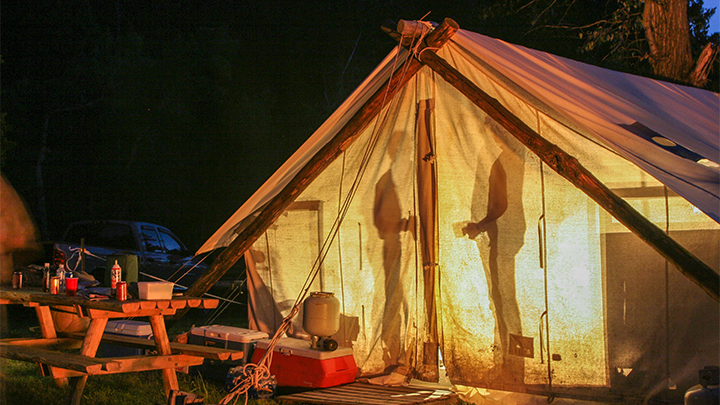
Aside from sleeping in your sub-zero sleeping bag, everything should receive use during your summer outing. Even firing up your Mr. Heater Big Buddy portable heater to ensure it ignites is worth 15 minutes in June. The same goes for your fuel-fired camp kitchen. Fire up the burners and prepare a meal, fresh or freeze-dried. You can create a fall meal list and review whether any items are missing from your cooking mess kit. That meal list serves to help you shop, plus decide on how many coolers are needed to preserve fresh food and fresh game later if successful.
An overlooked element is lighting since summer days last into the night. Test lanterns, flashlights and even lights attached to campers to make sure bulbs are all working. Inventory fuel, mantle and bulb requirements. You will be departing, returning and likely cooking in the dark, so a lighted atmosphere guarantees efficiency and eliminates dangers like tripping over an axe.
Although your goal is to ensure every camp item is ready to roll, it pays to keep a repair kit handy. Extra tarps, duct tape, all-weather adhesive, a tent patch kit and yards of rope or paracord resolve many surprise snafus that are bound to arise.
And remember, today’s devices run on batteries. Have a plan to keep everything charged and do not rely totally on your truck battery to meet demands. In backcountry camps you should test solar chargers to determine if they can get the job done with shortened or cloudy days.
Scout-A-Rama
With camp established, lace up your boots. It is time to scout and do a dry run in and out of your hunting area. This could be undemanding if you plan to hunt a 640-acre state wildlife area. It could be downright stressful if your hunting area includes a cliffside trail where a misstep means falling several hundred feet. Of course, even a simple creek crossing on a public hunting area could turn dicey in the dark or in a frozen landscape.
That is why it is important to download all maps on your smartphone and GPS via apps like HuntStand before a summer hunting camp audition to guarantee navigation even without service. You can mark routes into tricky locations to be later used in the dark or for game extraction. Your new route markings can help you extend virtual scouting farther while sitting at home. Plus, you can mark any old sign you see like weedy whitetail scrapes or old rubs that have lost their fresh sheen.
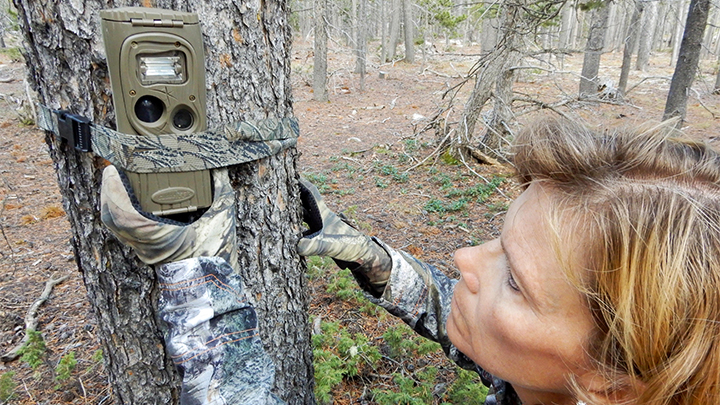
Where legal, trail camera placement provides scouting even if you live hours away. Secure your investment with a lock and load it up with lithium batteries, and plenty of image storage for the long mission.
To get the most out of your summer campout and the hours away from work, let your summer vacation serve dual purpose: hunt preparation and a much-needed escape.
















